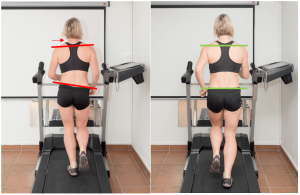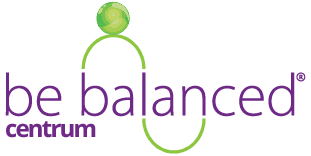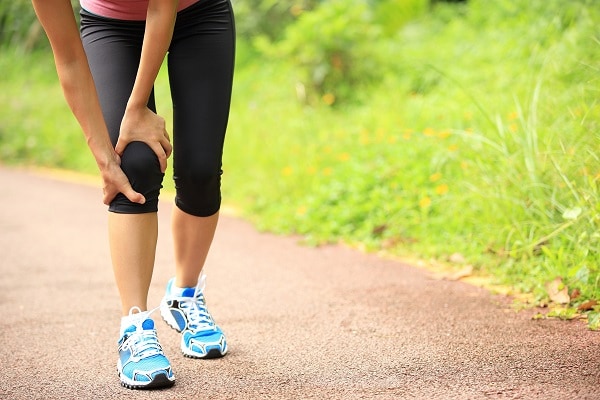Do you suffer from knee pain while running?
Knee pain is one of the most common problems runners have. They appear in both beginners and advanced and often return repeatedly. They are associated with injury, increase in training volumes or intensities or insufficient regeneration. But sometimes the knee starts to hurt out of nowhere, as if without a cause. The reason may be overload, but not by excessive volume of load. We mean overload due to the suboptimal position of the joint, i.e. its uneven load.Objectively, you have only a small movement load, but you still create an overload, because some structures are loaded more and others less. We usually take a break in training for two weeks to a month, and after re-loading, the pains are back in exactly the same amount after a few downhill runs.
Let’s take a look at the most common injuries and their causes:
Running knee – patellofemoral syndrome – is an overload of cartilage under the patella. More often it occurs in women and in novice runners. It is manifested by pain from the front of the knee, around and under the patella. This syndrome develops for a long time. Most of the time, it is not an acute injury (only if you fall on the knee), but a long-term inappropriate overload. Pains typically appear with walking up stairs and downhill. To alleviate the trouble, it is worth stretching the front of the thighs. The shortened thigh muscle exerts constant pressure on the patella and thus permanently compresses the cartilage. In addition, a temporary restriction of volumes and the omission of hills will help. Regenerate cartilage can also joint nutrition containing glucosamine sulfate. Taping the knee to support the patella will lighten the knee.
ITBS – iliotibial tract syndrome – if we feel pain on the outer side of the knee, especially when walking down stairs or downhill and when bending the knee more than 30 degrees, we are probably struggling with ilitobial syndrome. This is a pain in the tendon of the contracted ligament strip on the outer side of the thigh. Into this ligamentous strip at the top of the outer side of the pelvis, a muscle radiates, which helps to stabilize the pelvis laterally. However, due to the incorrect position of the pelvis, this muscle works significantly more than it should. So he pulls a lot on his tendon on the outer side of his knee. When bending the knee, the stretched tendon rubs against the bone unevenness on the outer side of the knee, and with greater irritation, the degree of overload and injury increases. Sterile inflammation develops. So this pain is definitely not possible to overcome. We can help ourselves by relaxing the side of the thigh, i.e. by mechanical elaboration on the outer side of the thigh, for example, on a foam roller or kitchen roller. Taping and stretching can also help. However, this does not solve the cause of the problem and so may not be a permanent solution. It is necessary to influence the correct position of the pelvis and the involvement of the muscles on the outer side of the hip in the standing phase of the foot.
Jumping knee – patellar tendinitis – is manifested by pain at the lower edge of the patella and at the protrusion on the tibia under the patella. This is an overload of the quadriceps muscle of the femur at the site of the attachment of its tendon to the tibia. Overload occurs during jumping and rebounding, when the knee and with it the tendon of the anterior thigh muscle stretches. This mechanism overloads the tendon at the lower edge of the patella during muscle imbalance. It appears mainly in volleyball players, basketball players and all athletes in general. It is not so common in runners. If you have these problems even as a runner, it means that you jump a lot while running, you have a shortened front thigh muscle, you sit in the run and your leg is not very springy. In the beginning, it is effective to ice and tap the painful place as in patellofemoral syndrome.
Damage to the cartilage on the articular surfaces of the knee – these problems include all cartilage damage in the knee area. There will be a feeling of stinging around the joint and sudden undermining of the leg. These are changes in the deep layers of cartilage, which will spread closer to the surface due to further improper loading. They occur when the joints are excessively loaded – sharp impacts, impacts, incorrect pedaling, poor running economy.
Damage to the meniscus – the meniscus is most often damaged after impact, sprain of the joint, sharp turn of the knee to the side. However, it can be damaged gradually by persistent inappropriate loads. It is manifested by pain in the articular slit on the side of the damaged meniscus. Knees hurt mainly after exercise. Most often, the internal meniscus is injured. In that case, you are bothered by the Turkish sitting and sitting on your heels. It is necessary not to irritate the knee, this increases the injury. That is, not to do what hurts.
Let’s look at the knee a little more comprehensively.
The knee is the central joint between the foot and hip. The foot has a connection with the ground. The hip is connected to the pelvis and the pelvis is connected to the ground. While the knee is not close to any fixed point, it is left in the middle at the mercy of its more stable neighbors. He’s kind of a slave to how his leg and hip are built. Therefore, when the knee hurts, it is not the knee itself that is to blame, but those who are responsible for its position, that is, the leg, hip and pelvis. Hence the treatment. It is not possible to cure the knee by circling the ultrasound head around the painful area or strengthening the anterior thigh muscle. It is necessary to ensure that the bones that meet in the knee have the right direction and are correctly aligned in movement.

The problem of walking and running
When walking and running, we have to deal with a situation that our four-legged colleagues do not know. And this with the phase when we stand on one leg. We are stable in the standing position. We have weight on both legs, so the weight of the torso and pelvis is well distributed, the center of gravity falls between our feet. What happens if we take one leg off, that is, one point of support? We have to balance ourselves somehow over one leg. Either we can straighten well above one leg or, and this is more common, we choose some simpler replacement mechanism. For example, we hang in the standing hip and extend it to the side, or we bow over the leg completely. And that’s what happens at every step.
Most of the time we have a side difference where one hip holds us better than the other. Therefore, sooner there will be a problem on one side. If we have a problem on both sides, both knees can hurt equally.
That is why knee pain is so common. To this we can add the increasing life expectancy and the acidifying diet of our time, which does not benefit cartilage.
Possible causes of all the knee joint damage described above are:
• Foot – incorrect position of the foot when stepping on, insufficient activation of the sole muscles
• Hip – incorrect stabilization of hip joints from the side
• Torso and pelvis – planted pelvis, poor involvement of the muscles of the trunk, asymmetry in the torso leading to a bow to one side
Foot
When running, it is very important to use the entire sole of the foot for reflection and impact. Runners often forget about their toes, which can be of great help in improving bounce and impact efficiency. The muscles of the sole of the foot have huge potential. On a normal day, when we wear shoes all the time, we do not use our fingers at all. It’s like wearing thick gloves on our hands for days without splitting our fingers.The hands would also gradually wean off the delicate manual labor. It’s the same with the foot. When running, try to grasp the ground with your fingers. Think of all your fingers, including your little fingers, and you grasp the ground. This can help reduce ankle sagging, i.e. excessive pronation.
Hips
With proper involvement of the muscles around the hip joint, improvement of the stability of the hip and pelvis when running, the knee can be kept in the correct position in support, i.e. it does not go to the sides, most often inward. If we want to improve the work of these muscles, it is not exercises such as resting the leg sideways in a standing position or lying down that will help us, but exercises where we are forced to lean on the hip joint. Thus, we train the original function of the hip joints, that is, the supporting function of the hip, without overloading the muscles that we do not need for this function.
Try exercises for good hip upright: From the four-legged position, slide one knee forward between your palms, sit on your side. Move your hands a little forward so that they are about 20cm in front of the knee. You should feel a stretch on the outer side of the hip (over the buttocks). Stretching alone is not enough, the muscle needs to be intensively involved in this stretching. Therefore, raise the opposite hand, as if you want to pull yourself behind something. At that moment, you should feel that the muscle has engaged, that is, that the thigh is intensely leaning against the ground and the muscles around the hip have to work a lot. If you don’t feel the job, you’re doing something wrong. Either you have too much weight on the other hand, you need to pull yourself up by the raised hand, or your hip muscles are so out that they can’t automatically engage. In this case, actively push your knee down into the ground, as if you want to get up on your knee.
Torso and pelvis
Excessive rotation of the pelvis and/or its shift from side to side are very uneconomical for running. The cause of this is the poor work of the deep muscles of the trunk, which do not sufficiently hold the chest with the pelvis connected. This just overloads the back. During running, it is good to concentrate on pulling up as if we are carrying something on our head, so we stop jumping and straighten up better in the run. Furthermore, it is effective to align the work of the arms so that they move to the front and back, that is, not to the sides. The movement of the arms will help to strengthen the torso.

